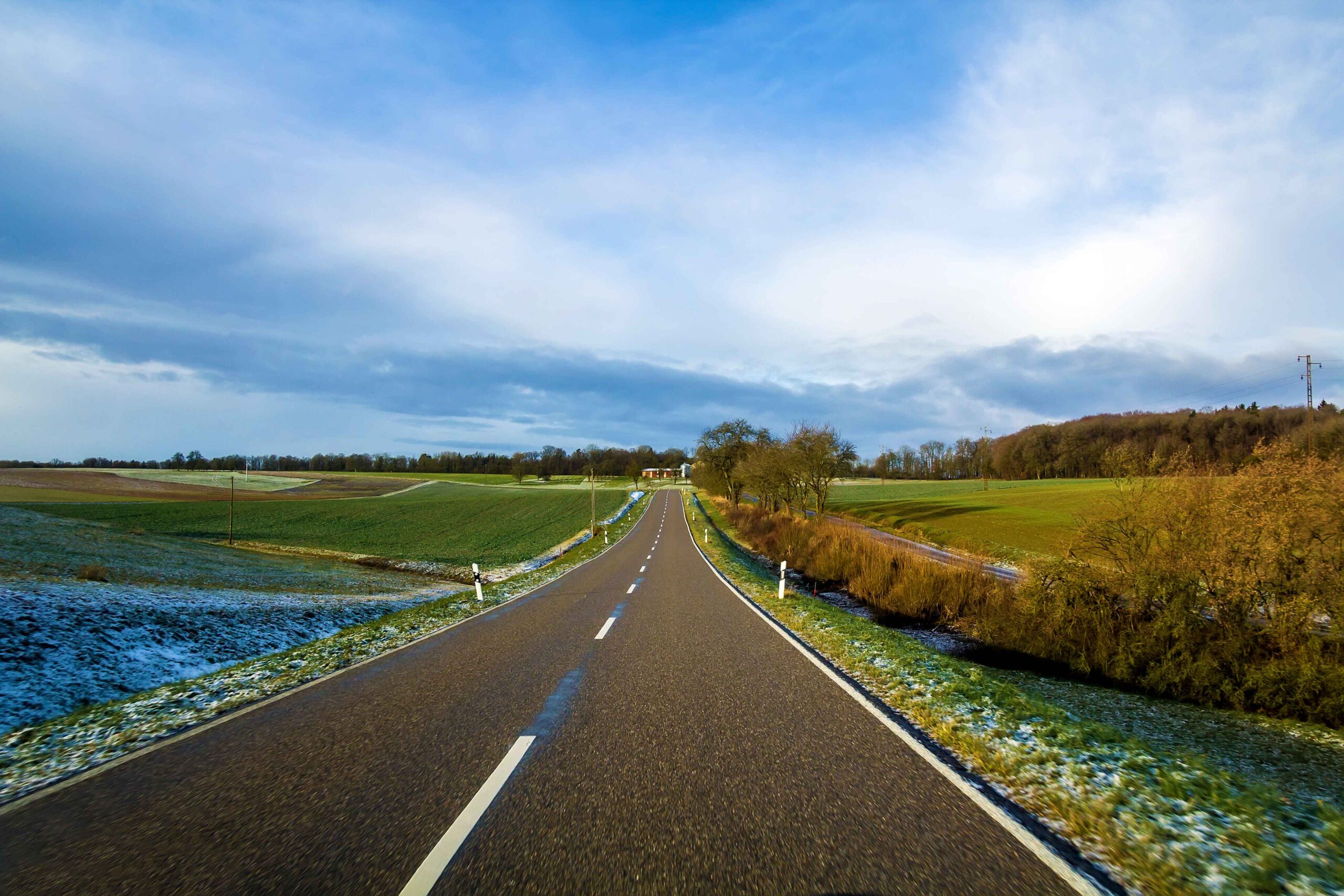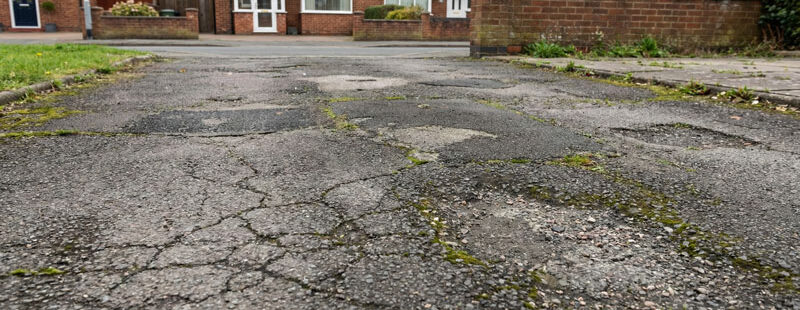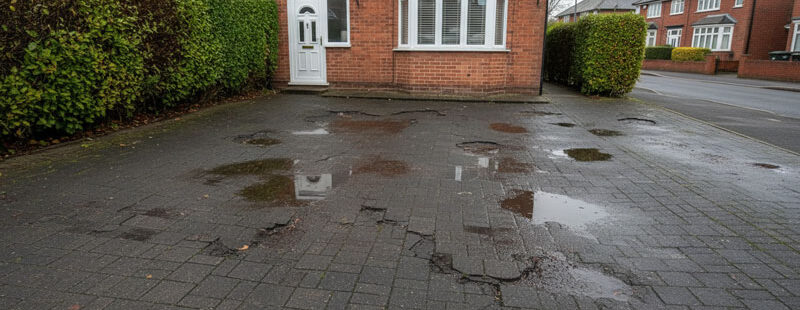
- min min
- No Comments
- August 3, 2025
How Weather Conditions Impact Road Surfacing in Hertfordshire
The UK’s weather is known for being unpredictable—and Hertfordshire is no exception. From freezing winters to sudden summer downpours, the region’s changing climate poses a major challenge for road durability. If you’re planning road surfacing in Hertfordshire, understanding how local weather conditions affect performance and longevity is essential.
In this blog, we explore how temperature swings, rain, UV exposure, and seasonal changes impact road surfaces—and what can be done to mitigate these effects for stronger, longer-lasting roads.
Why Weather Matters in Road Surfacing
Weather directly affects the structure, appearance, and safety of roads. Temperature changes cause expansion and contraction, moisture seeps into cracks and freezes, and UV rays gradually degrade surface binders. Without the right materials and maintenance, weather damage builds up fast—leading to potholes, cracking, and surface raveling.
1. Freezing Temperatures and Frost Heave
One of the most damaging weather effects on road surfacing in Hertfordshire is freeze-thaw cycling.
- Water enters small cracks in the road surface.
- When temperatures drop, the water freezes and expands.
- This widens the cracks, and the cycle repeats with each frost.
The result? Widespread cracking and potholes, especially in rural and residential roads that see less frequent maintenance.
Solution:
Using flexible, frost-resistant asphalt mixtures and sealing small cracks early prevents water ingress and long-term damage. Winter inspections and rapid patching also help reduce costly deterioration.
2. Heavy Rain and Poor Drainage
Hertfordshire’s wetter months often lead to standing water on roads, particularly in older infrastructure with poor drainage design. If water sits too long on the surface or beneath it, it softens the subbase, causes rutting, and weakens structural integrity.
Solution:
Proper road surfacing must include adequate drainage systems, fall design, and moisture-tolerant base layers. Permeable materials and regular drain maintenance also help avoid surface water buildup and subgrade weakening.
3. Summer Heat and UV Damage
In summer, rising temperatures can cause road surfaces to soften or even melt, particularly older or poorly maintained tarmac. UV rays degrade the surface binders over time, leading to a brittle texture and loss of structural strength.
Solution:
Using UV-stable surfacing materials with heat-resistant properties helps prevent softening and aging. Surface dressing or sealcoating in spring is an ideal pre-summer protective step.
4. Seasonal Expansion and Contraction
Even small temperature changes cause asphalt to expand and contract, which creates stress over time—especially at joints and seams. In Hertfordshire’s variable climate, these stresses lead to surface fatigue and cracking.
Solution:
High-quality installation using expansion joints, flexible binders, and consistent compaction reduces the impact of seasonal movement. Regular monitoring catches early signs of cracking before they spread.
5. Wind and Debris
While not as destructive as frost or rain, windstorms and falling debris can damage surface markings and increase wear. Roads in rural or wooded areas of Hertfordshire are especially vulnerable.
Solution:
Regular sweeping, cleaning, and repainting of road markings ensure safety and prolong surface aesthetics. Protective edge finishes and kerbing also reduce damage from loose debris.
Building Resilient Roads in Hertfordshire
If you’re managing a public road, industrial site, or private driveway, weather-resilient surfacing is a must. Choosing a contractor who understands local climate patterns and uses durable materials is the first step toward building infrastructure that lasts.
Ideal Materials for Hertfordshire’s Climate
Some of the most effective surfacing options for the region include:
- Dense Bitumen Macadam (DBM): Offers strength and moisture resistance
- Stone Mastic Asphalt (SMA): High resistance to rutting and cracking
- Permeable Tarmac: Helps water drain away instead of pooling
- Surface Dressing: A cost-effective way to seal and protect older surfaces
Each solution should be tailored to the traffic type, location, and drainage needs of your specific site.
Maintenance: Your Weatherproofing Strategy
Even the best surfacing can’t completely resist weather—but smart maintenance can. Key steps include:
- Annual surface inspections
- Prompt crack sealing and pothole repair
- Repainting and retexturing worn areas
- Drainage checks, especially before winter
- Surface dressing every 5–7 years
These steps dramatically reduce long-term repair costs and help maintain safety for road users.
Expert Road Surfacing in Hertfordshire
At East Herts Surfacing, we understand how Hertfordshire’s climate affects roads—and we know how to build for it. Our team delivers weather-resistant road surfacing using high-spec materials and tailored construction methods designed to handle local conditions all year round.
Whether you’re resurfacing a private road, car park, or estate access lane, we provide expert guidance from planning through to post-installation care.
Final Thoughts
When it comes to road surfacing in Hertfordshire, weather is not just a background concern—it’s a central factor in long-term success. Choosing the right materials, ensuring proper drainage, and staying proactive with inspections and maintenance can save thousands in future repair costs.
☔ Ready to future-proof your surface against the weather?
📍 Based in Hertfordshire
🌐 Visit: https://easthertssurfacing.co.uk/
📞 Contact our team for tailored advice and a free quote.





